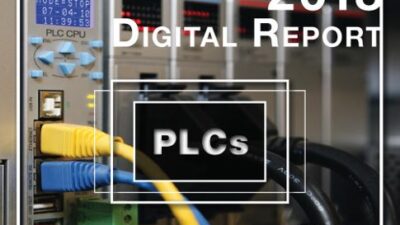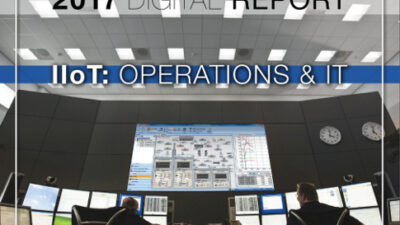Lantronix introduced the new XPort Architect (AR) embedded processor module and the Evolution Network Operating System (ENOS) to deliver a flexible, programmable networking platform for making intelligent, secure devices, the company says. The module and software are the first data-center-grade embedded device server and network operating system to relay information through private networks and the Internet for secure connections to control and business applications, the company says. XPort AR uses the same high-level data transport and security mechanisms used by IT.
Lantronix says the announcement advances capabilities of the XPort family with more memory, processing power, and data-center protocols for applications requiring increased on-module intelligence and customization. AR module includes an embedded computer, an Ethernet 10/100 interface, an onboard network operating system, and Web server in an RJ45 package, about the size of two sugar cubes. Developers can use AR’s central processing unit (CPU) to add device-specific intelligence through an application programming interface (API). Power over Ethernet (PoE) pass-through feature eliminates power cables to the device; AR is the first fully IEEE PoE standards-compliant embedded device server module.
“Convergence of machine information with enterprise business processes will transform the way companies deliver service and capture latent lifecycle profits,” says Marc Nussbaum, CEO at Lantronix. Lantronix introduced XPort in 2003, which Nussbaum called the “world’s leading embedded Web server, dramatically reducing an OEM’s development cycle for adding networking capabilities. The new XPort AR enables companies to build custom devices that more easily integrate as full-fledged members of the corporate infrastructure. Machine-to-machine (M2M) integration adds tremendous value by enhancing processes, such as workflow improvement, asset tracking, customer service and product maintenance in a wide variety of vertical markets, including industrial and building automation, security, medical, financial, energy metering and point-of-sale applications.”
The device has a new powerful Lantronix DSTni 120 MHz processor, up to three serial ports to control three serial devices, 11 general purpose input/output (GPIO) control pins, 4 Mbytes of flash memory and 1.25 Mbytes of SRAM, XPort AR enables manufacturers to quickly and easily build Ethernet or IP networking capabilities into products. This gives users ability to remotely monitor, access, and manage devices or machines over a network or the Internet. XPort AR also provides local processing and storage of information from the attached device. Using either active or spare Ethernet pairs, XPort AR complies with IEEE 802.3af PoE to edge devices and is compatible with any standards-complaint PoE Ethernet switch. Without need to run power lines, PoE-enabled devices can dramatically lower overall material and installation costs, Lantronix says.
XPort AR software combines a compact, hardened, real-time operating system (RTOS) kernel with a full Layer 3 TCP/IP networking stack and a CGI-based dynamic Web server. Capabilities include a suite of enterprise-grade, open standards-based security, such as SSL 3.0 and SSH2 encryption protocols, supporting cipher and hashing algorithms, including 3DES, AES and SHA-1. These capabilities ensure the machine network does not become a source of vulnerability, the company says. AR also provides XML (Extensible Markup Language) and RSS (Really Simple Syndication) feeds for configuration and information transport. Ability to configure the XPort AR using a “Cisco like” Command Line Interface (CLI) allows IT professionals to rapidly integrate device-based machine assets into existing datacom networks.
The technologies allow designers to focus on code and hardware that serves to differentiate their product, reducing costs and time to market, says Rahul Shah, product line manager at Lantronix.
An XPort AR Evaluation Kit includes an XPort AR device server, an evaluation board, a universal power supply with snap-fit plugs for different countries, a CAT5 network cable, a serial adapter, RS-232 cable, and user manual. Also included in the kit is a CD with sample code, application notes, CAD PCB files, and software utilities in PDF format.
Edited by Mark T. Hoske, Control Engineering editor-in-chief, [email protected]


